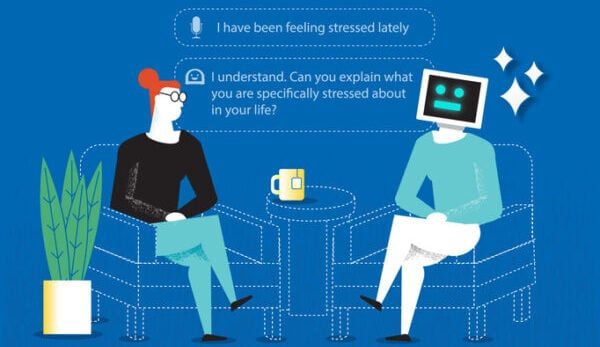By JOHNS HOPKINS UNIVERSITY
The paper also indicates that scrambler therapy may be more effective than another noninvasive therapy, transcutaneous electrical nerve stimulation, or TENS.
“IT’S LIKE PRESSING CONTROL-ALT-DELETE ABOUT A BILLION TIMES.”
The researchers’ write-up appears in the New England Journal of Medicine.
Scrambler therapy, approved by the United States Food and Drug Administration in 2009, administers electrical stimulation through the skin via electrodes placed in areas of the body above and below where chronic pain is felt.
The goal is to capture the nerve endings and replace signals from the area experiencing pain with signals coming from adjacent areas experiencing no pain, thereby “scrambling” the pain signals sent to the brain, explains primary study author Thomas Smith, professor of palliative medicine at the Johns Hopkins Kimmel Cancer Center and a professor of oncology and medicine at the Johns Hopkins University School of Medicine.
All chronic pain and almost all nerve and neuropathic pain result from two things, says Smith, who also is the director of palliative medicine for Johns Hopkins Medicine:
- Pain impulses coming from damaged nerves that send a constant barrage up to pain centers in the brain.
- The failure of inhibitory cells to block those impulses and prevent them from becoming chronic.
“If you can block the ascending pain impulses and enhance the inhibitory system, you can potentially reset the brain so it doesn’t feel chronic pain nearly as badly,” Smith says. “It’s like pressing Control-Alt-Delete about a billion times.”
Many patients “get really substantial relief that can often be permanent,” he says. Treatment consists between three and 12 half-hour sessions.
As a physician who treats chronic pain, Smith says, “scrambler therapy is the most exciting development I have seen in years—it’s effective, it’s noninvasive, it reduces opioid use substantially, and it can be permanent.”
TENS therapy also administers low-intensity electrical signals through the skin, but it uses a pair of electrodes at the sites of pain. Pain relief often disappears when or soon after the electrical impulses are turned off, Smith says. A study cited in the review paper evaluated the impact of TENS in 381 randomized clinical trials, and the authors found a non-statistically significant difference in pain relief between TENS and a placebo procedure.
Source: Johns Hopkins University
—
Previously Published on futurity.org with Creative Commons License
***
You Might Also Like These From The Good Men Project
 Compliments Men Want to Hear More Often
Compliments Men Want to Hear More Often  Relationships Aren’t Easy, But They’re Worth It
Relationships Aren’t Easy, But They’re Worth It  The One Thing Men Want More Than Sex
The One Thing Men Want More Than Sex  ..A Man’s Kiss Tells You Everything
..A Man’s Kiss Tells You Everything Join The Good Men Project as a Premium Member today.
All Premium Members get to view The Good Men Project with NO ADS. A $50 annual membership gives you an all access pass. You can be a part of every call, group, class and community. A $25 annual membership gives you access to one class, one Social Interest group and our online communities. A $12 annual membership gives you access to our Friday calls with the publisher, our online community.
Register New Account
Log in if you wish to renew an existing subscription.
Username
First Name
Last Name
Password
Password Again
Choose your subscription level
- Yearly - $50.00 - 1 Year
- Monthly - $6.99 - 1 Month
Credit / Debit Card PayPal Choose Your Payment Method
Auto Renew
Subscribe to The Good Men Project Daily Newsletter By completing this registration form, you are also agreeing to our Terms of Service which can be found here.Need more info? A complete list of benefits is here.
—
Photo credit: iStock
The post Scrambler Therapy May Ease Chronic Pain appeared first on The Good Men Project.
Original Article










